#MeasurementMonday
Text

Measuring Time: Atomic Clocks
The most accurate clocks that exist today are atomic clocks, measuring the flow of time based on the resonant frequency of atoms and molecules. This is possible because electrons associated with atoms exist at distinct energy levels, and the transitions between these energy levels can be determined, leading to a consistent resonance when probed. While there are several types of atomic clocks, with different setups and configurations, they all rely on a single substance.
Cesium clocks are the most common, and it is the resonant frequency of cesium (also written caesium) that is used for the current definition of a second. Some atomic clocks also use rubidium, or hydrogen. Less common and more recent is strontium, as well as aluminum, yttrium, and mercury. Historically, ammonia was actually used in the first atomic clock in 1949 before the first cesium clock was built in 1955.
Sources/Further Reading: (Image source - Wikipedia) (Time and Date) (Popular Mechanics) (NASA) (NIST)
81 notes
·
View notes
Text
Weigh-in-Monday
Today's Weight is.....175.4!!!
I'm down exactly 4lbs from last Monday! I'm 10lbs from my goal weight, and 20lbs from my ultimate goal weight!
Measurements:
Chest: 37
Waist: 32
Hips: 42
Bicep: 11.5
Thigh: 22
Calf: 14.5
Here is a link to last week's weigh in, and here is a link to my beginning weight and stuff.
This is all very very exciting! I think I said I was going to stop on next Monday, but I've decided that Friday will be my last day of drops. Then I go into 2 days of still eating 500 calories. Following that maintenance. I will still continue to blog about my experiences during maintenance and will also be starting a new challenge....
wait for it......
30 Day Shred in 38 days!!!!
I've seen some awesome results before doing the shred and I'm ready to start working out and getting toned! Honestly, I want to work out so badly that it is the main reason I've decided to stop my diet 7 days early.
This is so exciting, and I'm so glad to share all of it with you guys!
3 notes
·
View notes
Text
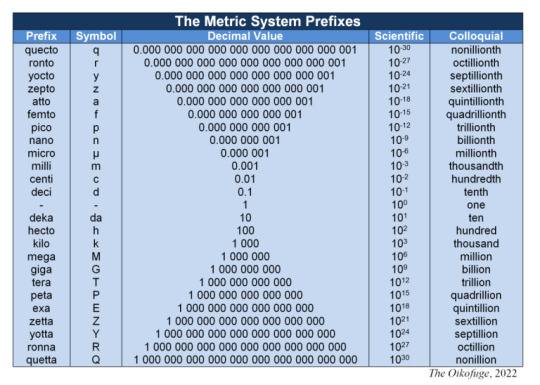
SI Prefixes
In addition to the units and derived units defined by the SI system of units, there are official SI prefixes used to increase or decrease the value of said unit, each multiplying by a value of ten to the power of a whole number. The first three prefixes from unity, in either direction, multiply by ten to the power of plus or minus one, two, or three, but from there the powers increase values of plus or minus three. As of this writing in early 2024 the highest and lowest prefixes respectively are 10 to the power of 30 and -30.
To distinguish between the positive and negative power prefixes, all of the positive power prefixes except the first three (deka, hecto, and kilo - for historic reasons) have capital letters as their symbols. The negative power prefixes use lowercase. Prefixes are added to units to form new words - hyphens and spaces are not used. Similarly, symbols for the prefixes are added directly to symbols for units. For example: a femtosecond, symbolized as fs; or a terabyte as TB.
Eight prefixes closest to unity were first adopted in 1795, two of which (myria and myrio) later fell out of use. These were officially recognized by the governing body in 1889. In 1960, myria and myrio were declared obsolete and the next three prefixes were added in either direction (mega, giga, and tera; and micro, nano, and pico). In 1964, the prefix chart was unbalanced with the addition of femto and atto among the negative powers, rectified in 1975 with the addition of peta and exa. Four prefixes were added again in 1991, with the final four only added in 2022.
Sources/Further Reading: (List from governing body) (Image source) (Wikipedia) (NIST) (Pronunciation and etymologies) (2022 article) (SI Brochure from governing body)
89 notes
·
View notes
Text
Day 1: Measurement Monday
Waist (around the navel): 114cm
Chest (half way between nipple and underarm): 115cm
Thigh (half way between knee cap and hip): 69cm
I chose to measure around the Caliper testing areas (as per the recommendations from the free calipers from bodybuilding.com).
In the past few months I have regained a lot of weight from when I lost at the start of the year. Poor nutrition, lazier exercise and lack of motivation and monitoring lead to this weight gain. For example, my gridiron club mates would set up "Lineman Challenges" which were centralized around eating a LOT of food.
After losing weight at the start of the year I became happier, motivated and felt confident. But now I just feel lost.
This journey will be about empowerment to find myself physically, mentally and spiritually!
0 notes
Text

Measuring Length: Transit-Time Measurements
One method of measuring distance, or length, is to emit a signal toward an object and measure the length of time it takes for that signal to return. Any signal can work for this method (sound, light, etc.), so long as the math for the speed of that signal is known (such as the speed of sound in water, or the speed of light in air, etc.). Then, a mathematical calculation can be performed to determine the distance between the signal emitter and the object.
Radar is one example of this method, using radio waves to determine distance. Another example is the global positioning system (GPS), which determines distance based on the time difference between your device and the signals sent from multiple satellites.
Sources/Further Reading: (Image source - University of Illinois) (NIST) (radartutorial.eu) (Wikipedia)
#Materials Science#Science#Radio waves#Electromagnetic spectrum#Light#Sound#MeasurementMonday#Acoustics#2024Daily
21 notes
·
View notes
Text
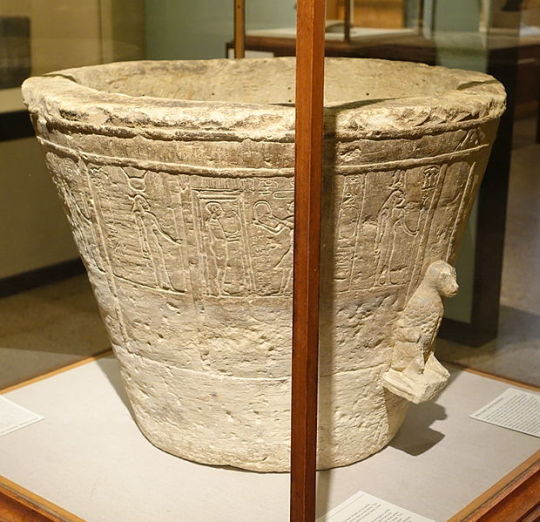

Historic Measurements of Time
While the constant awareness of what hour, minute, or sometimes even second, it is now is a factor of modernity, humanity has been attempting to measure and keep track of time for thousands of years (if not quite so rigorously as we do now). Earliest measurements were inexact and relative, often only marking hours as the smallest increments. As time was first measured in relation to the movements of the sun (days and years), it tracks that earliest measurements of time were dependent on the sun in the form of sundials and other 'shadow clocks', dividing the days into hours.
Following this came several other inventions. Two of the most popular included the water clock and incense clocks, both of which kept time by relative measurement of the movement of something other than the sun. In these cases, gravity's effect on water and the speed of burning incense, respectively. After that came hourglasses, using gravity and (typically) sand (but sometimes other materials), which historically measured exactly an hour and had to be calibrated against other time keeping devices.
Finally, sometime in the European Middle Ages (around the 1200s), mechanical clocks began to be used to measure time. The mechanical clock has no single inventor and is rather the product of centuries of slow advancement. These clocks typically rely on the potential energy of weights or coiled springs.
Sources/Further Reading: (Image source - Wikipedia) (Sundials) (Water Clocks) (Incense Clocks) (Hourglasses) (Mechanical Clocks)
23 notes
·
View notes
Text
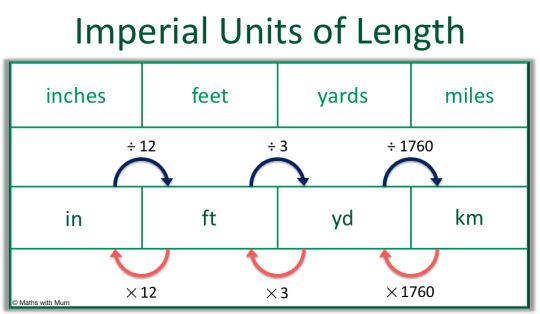
Length in Imperial Units
In the imperial system (as well as US customary units), the base unit of length is the yard, with the symbol yd. As a unit of measure, the yard has been around for over a thousand years, though the distance of a yard varied. Around 1300 the yard was standardized at three feet, the next smallest length unit in the Imperial system. However, measurements of a yard were often inexact until more recent times; at the end of the 1800s the yard was defined in terms of the meter for the first time, with the length redefined in 1959.
Units smaller than the yard include inches and feet, among other measurements (thou, barleycorn, and hand) that are less common today. Units larger than the yard include chains, furloughs, and miles, though only miles are used with any regularity today.
Sources/Further Reading: (Imperial Units Wikipedia) (Yard Wikipedia) (University of Nottingham) (theedkins.co.uk)
Image source.
18 notes
·
View notes
Text
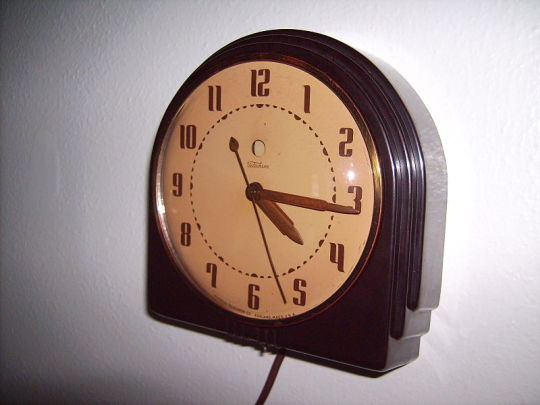


Measuring Time: Electric, Pendulum, and Quartz Clocks
There are numerous types of time keeping devices that qualify as clocks, depending on classifications and sub-classifications. Mechanical clocks were already briefly touched upon in the previous Monday post, and three more categories (electric clocks, pendulum clocks, and quartz clocks) will be briefly described here.
A general category of a variety of clocks, electric clocks are any clock that is powered by electricity instead of other means (whether mechanical or otherwise). They were invented in the 1840s but did not become widely used until electricity was more available to the public. There are several sub-categories of electric clocks and even some electromechanical clocks that rely on both electricity and mechanics. Common varieties include synchronous clocks, which rely on the frequencies of the AC signal, and radio-controlled clocks.
Pendulum clocks are a variety of mechanical clock wherein the time-keeping is reliant upon the swinging of a pendulum. The movement of the pendulum typically rocks a lever back and forth, controlling a weight that slowly drops in time with the pendulum. Because the weight eventually drops as far as it can, pendulum clocks need to be rewound to restart the process.
Finally, the quartz clock is a type of electric clock, wherein the electricity is used to trigger the oscillation of quartz. Quartz is a piezoelectric material. When the electric circuit is turned on, quartz oscillates at a specific frequency (dependent on its size, shape, and crystallographic orientation) that is regular and can be used for time keeping.
Sources/Further Reading: (Image 1 - Wikipedia, Electric) (Image 2 - Wikipedia, Pendulum) (Image 3 - Wikipedia, Quartz) (Electric clocks) (Pendulum clocks) (Quartz clocks)
21 notes
·
View notes
Text
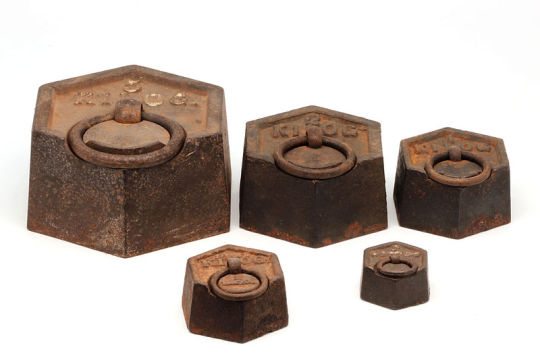
Mass in SI Units
Historically, mass was used to represent the quantity of matter physical objects held. However, once it was discovered that objects could have the same number (quantity) of atoms but different masses (because different elements have different masses), mass has come to mean different things. Mathematically, it is a measure of an objects inertia when a net force is applied, though other definitions exist.
The base SI unit of mass is the kilogram, abbreviated kg. It is the only base SI unit to include a prefix, chosen over the gram for largely historical reasons. The kilogram (called the grave from 1973-1975) was first defined in 1795 as the weight of one liter of water, which still matches with its current definition, though this is no longer how it is defined. A physical prototype was first manufactured in 1799 and an international prototype 80 years later in 1879. In 2019 it was redefined "by taking the fixed numerical value of the Planck constant h to be 6.62607015 x 10^–34 when expressed in the unit J s, which is equal to kg m^2 s^–1, where the metre and the second are defined in terms of [the speed of light] and [the atomic transition frequency of cesium."
Sources/Further Reading: (Image source - Kilogram Wikipedia) (NIST) (BIPM) (Mass Wikipedia)
14 notes
·
View notes
Text
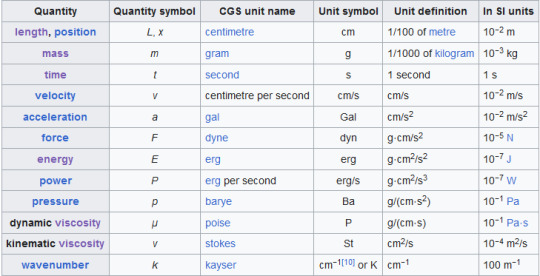
CGS System
The centimeter-gram-second, or CGS, unit system is a variant of the metric system with the aforementioned units as the base units. (As opposed to the meter and the kilogram with SI units.) On a surface level, this unit system is SI units, simply at a different order of magnitude, and has been replaced by the SI system in most fields. However, where the CGS system really differs is in the study of electromagnetism, where it is still in use today.
In SI units, additional base units are defined, including the ampere. However, in the CGS system, the units used for current are derived units (typically called electrostatic units [esu]), with no new base units defined. Because the ampere is not related to other units (length, time, mass, etc.), a constant is needed to relate it to other units. In the CGS system, this is not the case. As such, conversions between the two systems can be complicated.
One advantage of the CGS system, and one reason it is still used today, is that electric and magnetic fields have the same unit, simplifying some calculations.
Sources/Further Reading: (Table source - Wikipedia) (RPI Electromagnetic Theory) (Wolfram) (LibreTexts) (Uni-Kiel)
20 notes
·
View notes
Text

Units of Length (beyond SI and Imperial)
Many units of length exist beyond those in the most common unit systems, some based off these systems (the angstrom), some off of physical distances (A.U.), and many historical. Different fields and occupations use different examples of these to this day.
One such field is astronomy and astrophysics, which often requires descriptions of large distances. Units often employed for this purpose include the A.U. (astronomical unit), based off of the earth's distance to the sun, the light year, based off of the distance light can travel in one year, and the parsec, which is based on a more complicated derivation using trigonometry and the A.U.
Another field is in Earth-bound navigation by sea or air, which often relies on a nautical mile that is distinct from the more commonly referred to mile. The nautical mile is defined in terms of the earth, or, more specifically, one nautical mile was originally defined as one degree of the earth's latitude at the equator.
Finally, another common example is the angstrom, or ångström, defined as 10^-10m, based off SI units but separate from the prefixes the unit system employs.
Sources/Further Reading: (Wikipedia) (Astronomical Units) (Nautical Miles) (Angstrom)
Image source.
19 notes
·
View notes
Text

International System of Units
The international system of units, typically abbreviated as SI Units (for the French Système International) is a globally agreed upon system of units of measurement. As of 2019, there are seven base units, defined with the values of seven constants that describe the natural world.
The base unit of time is seconds, the base unit of length is the meter, the base unit of mass is the kilogram, the base unit of electric current is the ampere, the base unit of temperature is the kelvin, the base unit of the amount of a substance is the mol, and the base unit of luminous intensity is the candela. Other quantities and units in the SI system are derived from these seven units.
The seven constants are the "unperturbed ground state hyperfine transition frequency of the caesium-133 atom", the speed of light, the Planck constant, the elementary charge, the Boltzmann constant, Avogadro's constant, and the "luminous efficacy of monochromatic radiation of frequency 540 x 10^12 Hz".
Sources/Further reading: (Official Governing Body) (Wikipedia) (Image source)
23 notes
·
View notes
Text

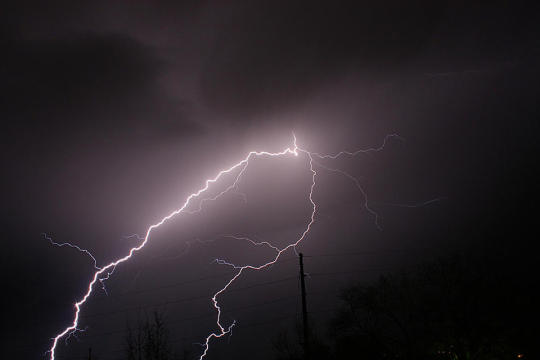
Electric Current in SI Units
The seven base units defined by the SI system includes the ampere as a measure of electric current. Electric current itself is the flow of charged particles (typically electrons, but other charged particles such as ions generate current as well). Posthumously named after French mathematician André-Marie Ampère, the ampere was first suggested as a unit of measure in the late 1800s and first internationally recognized in 1908. The early definition for this unit was as follows:
The ampere is that constant current which, if maintained in two straight parallel conductors of infinite length, of negligible circular cross-section, and placed 1 meter apart in vacuum, would produce between these conductors a force equal to 2 x 10-7 newton per meter of length.
In 2019, the definition of the ampere was altered to be based on the fundamental physical constant of the elementary charge e, wherein "one ampere is the current in which one coulomb of charge travels across a given point in 1 second." Mathematically, the ampere - also abreviated as amp - is represented with a capital A.
Sources/Further Reading: (Images source - NIST, Ampere) (NIST, Electric Current) (Wikipedia, Ampere) (Wikipedia, Electric Current)
17 notes
·
View notes
Text

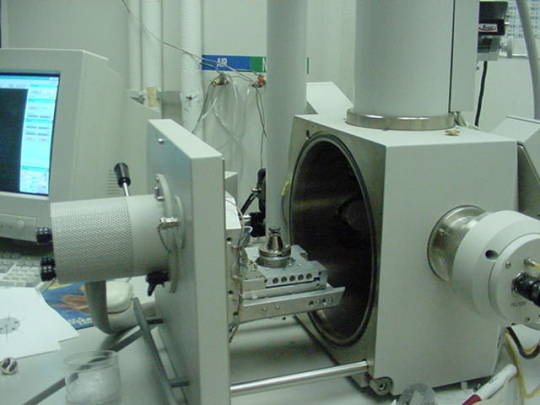
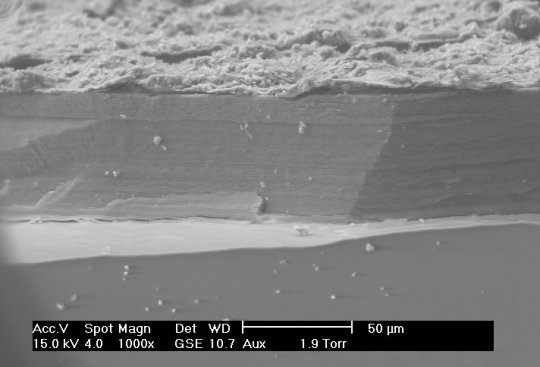
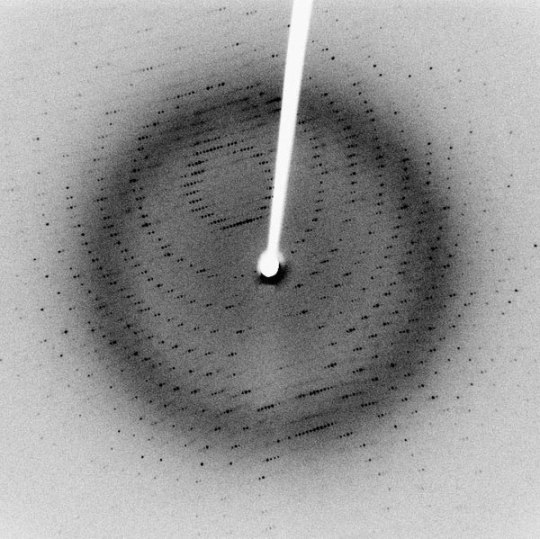
Small Scale Length Measurements
Many different techniques to measure length at small scales (typically microns to nanometers), including X-ray diffraction/crystallography, electron microscopy, and atomic force microscopy, among others. X-ray diffraction can be used to measure atomic spacing and lattice parameters (thereby determining crystal structure) using the wavelengths of the X-rays in question. Electron microscopy differs from many other techniques because they use, as the name implies, electrons to make their measurements, rather than any form of light. Though electrons are reflected back to a detector, the transit-time is not used to make measurements. Instead, Fourier transforms are used to generate an image.
Sources/Further Reading: (Images 1 and 4 - XRD Wikipedia) (Images 2 and 3 - SEM Wikipedia) (Measuring Length Wikipedia) (University of Wisconsin-Madison XRD) (University of Pennsylvania XRD) (University of Colorado XRD) (SEM Book Chapter)
#Materials Science#Science#Materials characterization#Electron microscopy#Diffraction#MeasurementMonday#2024Daily
12 notes
·
View notes
Text

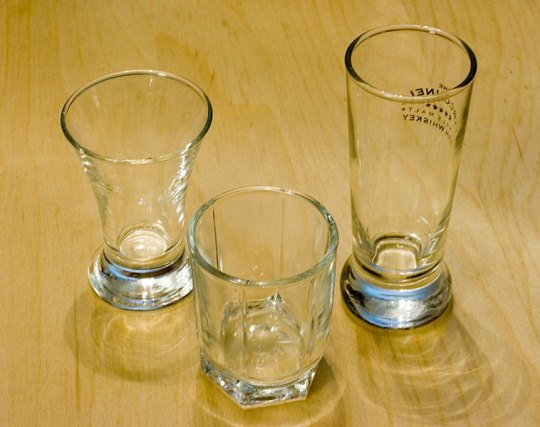


Unusual Units of Measure
While most units of measurement fall into one system or another (metric/SI, Imperial, US Custom, etc.), there are some units that stand alone, outside of unit systems. This can be for a number of reasons, including historical or colloquial units. Sometimes these units can be converted easily to standard unit systems while other times they can not. Common, more well known examples include the following:
The historic measurements of the hand, used in the measurement of horses in English-speaking countries and equivalent to 4 inches, or the cord, used to measure volume of firewood in the US and Canada. A colloquial, unquantifiable, and comparative unit like "a city block", used to estimate and describe distances. Colloquial, quantifiable, and comparative units like "an olympic-sized swimming pool", used to describe volume or size, or comparing something to a geographical region (size of Rhode Island, size of Wales, etc.). And units without any comparison with standard systems, like Scoville heat units, measuring the hotness of various peppers.
Perhaps the most well known non-system unit in materials science is the barn, a measure of area equivalent to 10^ -28 meters used in nuclear and particle physics.
Sources/Further Reading: (Images - Wikipedia)
17 notes
·
View notes
Text

Time in SI Units
Time is defined as the sequence of events and existence in an apparently irreversible march forward, often referred to as the fourth dimension. It is one of the seven fundamental physical quantities as defined in the SI unit system, with the base unit of time as the second used to measure intervals of time. The second has been around for centuries, first appearing on mechanical clocks in Europe in the late Middle Ages, and has had three standard definitions during that time:
As a fraction of a day (by the 1940s to be 1/86,400 of a solar day)
As a fraction of a year ("the fraction 1/31,556,925.9747 of the tropical year for 1900 January 0 at 12 hours ephemeris time" as of 1956)
And the modern definition as of 1967 as defined as the frequency of microwave radiation from cesium atoms ("the duration of 9,192,631,770 periods of the radiation corresponding to the transition between the two hyperfine levels of the ground state of the caesium-133 atom")
The second is the only SI unit of time, but while prefixes are common for intervals smaller than a second (millisecond, picosecond, etc.), it is rare for prefixes to be used for units larger than a second (megasecond, terasecond). Instead, the historic units of minutes, hours, days, months, years, etc., none of which are SI units, are typically used.
Sources/Further Reading: (Image source - Time Wikipedia) (Second Wikipedia) (NPL) (PTB) (Time NIST) (Second NIST)
15 notes
·
View notes